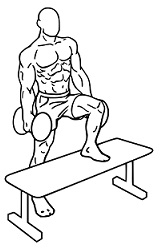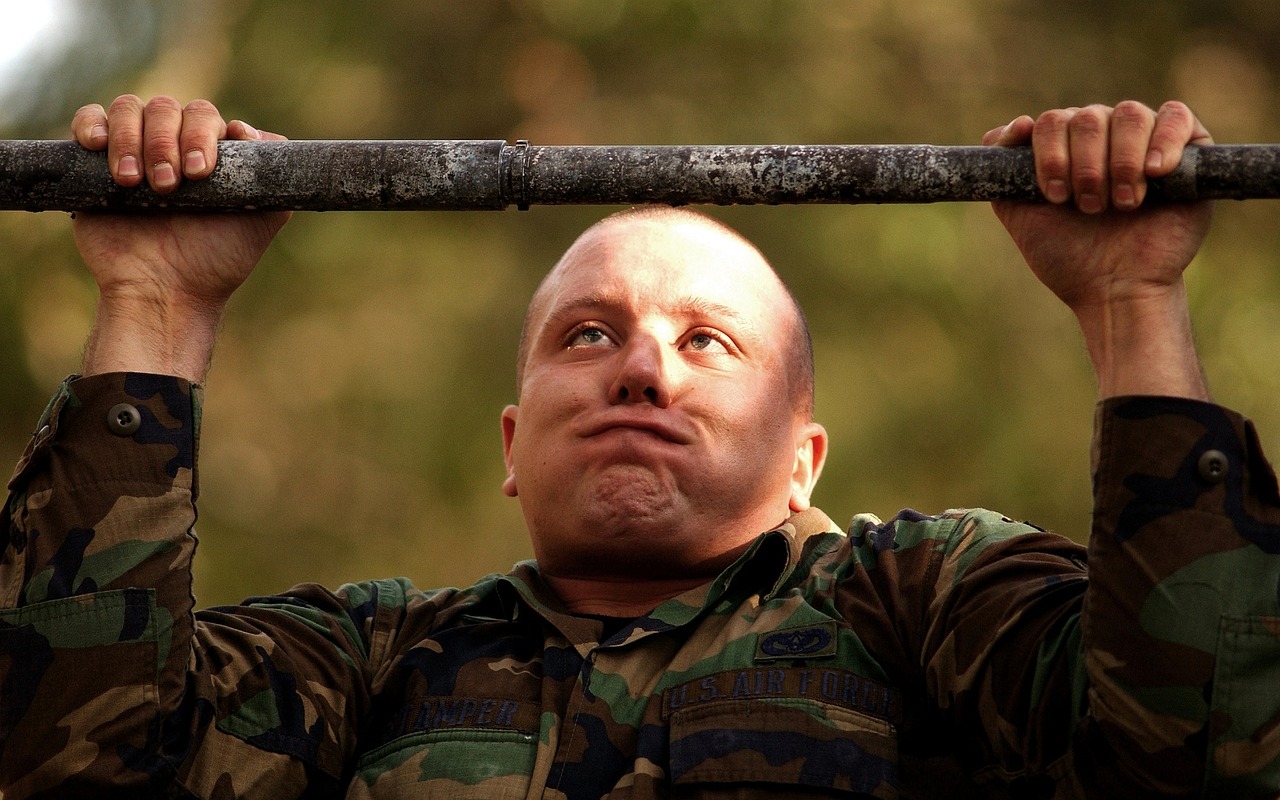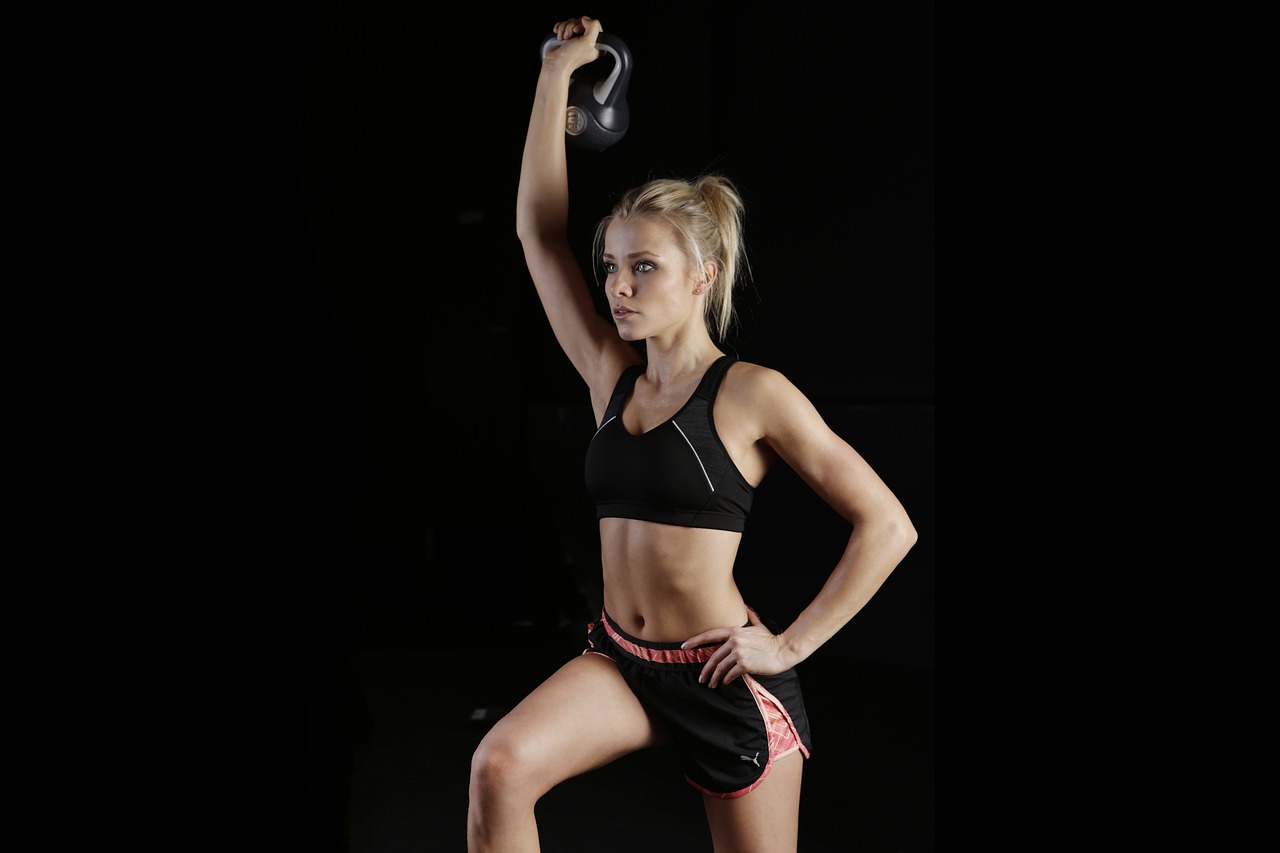How does height affect weightlifting ability? Do tall people or short people have the upper hand? The calculator and explanation below help answer these questions. Note that by only accounting for body height, the answers are merely approximate as many other factors come into play.
Height and Weightlifting Ability for Various Exercises
Lifting weight is doing work. And I’m not talking about the kind you do on your computer. Rather, it is physical work, which is the product of force and distance. The heavier the weight and further the distance, the greater the work done. Sometimes weight and distance are related to body height and sometimes they aren’t. This leads to four categories. These are listed below along with the impact of body height. Afterwards is a section on concepts to help provide a more complete understanding of how height affects weightlifting ability.
Body Weight Exercises
Common body weight exercises include push-ups and chin-ups. Both the distance traveled and the force required are positively related to height, meaning taller people do more work. A taller person’s greater ability to do work does not offset this larger work requirement. Hence body weight exercises tend to be more difficult for taller people.1 This is something coaches and drill sergeants should be made better aware of!

By Everkinetic (http://everkinetic.com/) [CC BY-SA 3.0], via Wikimedia Commons
Gym Weight Exercises
Common gym weight exercises include lifting dumbbells, barbells, and kettle bells as well as pulling cables. The weight is constant and independent of height while the distance traveled is proportional to height. Hence more work is done. But a taller person’s greater work capacity is enough to offset this. So taller people in general tend to have an advantage for these kinds of exercises. For evidence of this, consider that Olympic weightlifting champions, like world snatch record holding 6′6″ Behdad Salimi Kordasiabi, tend to be on the taller side.

By Everkinetic (http://everkinetic.com/) [CC BY-SA 3.0], via Wikimedia Commons
Some gym machine exercises also fall into this same category. One exception is curl machine exercises, as follows.
Curl Machine Exercises
Common bicep and hamstring curl machines are cable machines where the cable is guided over a set circular path. And given people tend to rotate their joints through similar angles independent of their body height, the gym weights travel the same constant distance. The magnitude of the gym weights is also constant and independent of body height. Hence the amount of work done is independent of body height. Taller people, given greater work capacity, have a huge advantage when it comes to curl machine exercises. This is why even wimpy looking tall guys can often lift most of the stack.
Common butterfly weight training machines also fall into this category, along with a variety of others. The key is that the cable is following a set circular path.

By Everkinetic (http://everkinetic.com/) [CC BY-SA 3.0], via Wikimedia Commons
Obstacle Exercises
Common obstacle exercises include stepping onto a bench and jumping onto a box. These are body weight exercises so the weight is positively related to height while the distance traveled is independent of height. Hence work increases with height, but not by enough to offset a taller person’s greater work capacity. These exercises are slightly easier for taller people. The relationship changes when obstacles are large, like a climbing wall.

By Everkinetic (http://everkinetic.com/) [CC BY-SA 3.0], via Wikimedia Commons
Concepts
Please note it does get a tad more technical here on in… I’ve added the following key concepts in case you want to better understand the height-weightlifting relationship.
Square-Cube Law: Volume scales faster than area. Hence mass scales faster than strength. Thus tall people, while stronger in the absolute sense, are relatively weaker. This is part of the reason why taller people have a harder time with body weight exercises, the other being the greater distance traveled. See square-cube law for more info.
Proportions: As people get taller, they also tend to get wider and heavier, though not proportionally. The actual mass-height scaling exponent tends to be somewhere between square and cube. This diminishes the trends expected from the square-cube law. See proportional for more info.
Weight Lifting Work: This is the amount of energy converted to potential energy when a weight is lifted. It is the product of force and distance. So when a taller and heavier person does a push-up, they apply more force over a greater distance and thereby do more work.
Weightlifting Work Capacity: This is the product of how much force a person can exert (strength) and the distance they can apply it over. A taller person will tend to have greater weightlifting work capacity given greater absolute strength and distance they can apply this over.
Relative Weightlifting Ability: One measure of weightlifting ability is work capacity divided by the corresponding exercise work. The calculator above outputs the relationship between this measure for a person with the specified height and an average height person of the same gender.
References
- Sekerak RJ, Zimmermann KP. Chin-up strength tests: does stature matter? J Sports Med Phys Fitness. 2008;48(1).


I don’t buy it. Strength shd be proportional to muscle cross section, which wd be proportional to height squared, while work capacity wd be proportional to muscle volume which wd be proportional to height cubed. Weight exercises at low reps wd emphasize strength; high reps, cardio type exercises wd emphasize work capacity. Maybe someone who actually knows this topic can weigh in on this.
Body mass tends to scale somewhere between quadratically and cubicly with height. So muscle cross sectional area, and thereby force, tends to scale somewhat less that quadratically with height. That’s how the calculator works though you did alert me to a typo in the text. Note that if you toggle the advanced settings, you’ll see 2.5 as the default scaling exponent, you might tweak this. I get more into scaling relationships in the context of the BMI here:better body mass index, you might find that interesting.
Reps, cardio, etc. is outside the scope here.
If anyone has come across empirical data on height and weightlifting ability, I would be really interested to know.
‘Weigh in’… good one 🙂
Think of it as distance moved. A taller lifter always does more work than a shorter one if lifting the identical weight. This is why shorter lifters might work up to within 10 kg of their clean & jerk 2 days before competition while a tall lifter might only clean & jerk 25% of their maximum while still working heavy on the snatch. Taller lifters have an advantage pulling since they have more time to apply force. They have problems with squatting and jerking due to the distance traveled. Limb length and proportions become an issue. Ever wonder why all the best male CrossFit athletes are all about 5’10” tall and 200 lbs? The body type chooses the sport. The Russian’s have literature for the training of the super heavy weight. But it’s not weight but height that changes the training. A lot of the training addresses maintaining bodyweight. Hence, more light weight exercises to build mass and fewer jerks. The biggest problem as you get taller is recovery from the workout.
I had always thought that taller lifters would have to apply more force due to the length of their limbs. I myself am 6’7″ and struggle heavily with pressing exercises such as bench and squat. Whereas my pull exercises are actually decent for my height and weight. I think of it in the sense as a weight is put on a stick parallel to the ground and attempt to lift until perpendicular to the ground. If the stick is lengthened it becomes progressively harder to raise the same amount of weight.
to me the greatest mystery in height does weight lifting stunt or even shrink you a little in my experience having done a bit of exercise as a teenager and been around young people who have worked out it certainly does stunt your growth i hope someday science does some research it to this matter